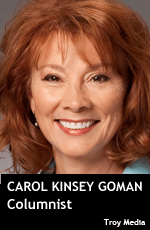Follow our body language tips during negotiations and you’ll be surprised at how well you too can start to ‘read the room’

BERKELEY, CA / Troy Media: Here is a tip that will quickly gain you the nonverbal advantage in any negotiation or important business meeting.
Want to know what the biggest ‘secret’ to body language experts’ success? They take the time to determine how a person acts under relaxed or generally stress-free conditions so that they can more accurately spot meaningful deviations.
It’s the same for you. Before you can assign meaning to a behaviour (arms crossed, slumped posture, frown, etc.) you need a baseline to compare it to. When you know what is normal for your counterparts/co-workers/interviewees, you will be able to quickly and accurately detect even minor shifts when their body language behaviour is out of character. For example, if the person you are interviewing habitually sits with crossed arms, it is a baseline posture. But if the crossed-arms gesture occurs only rarely, then you’d be wise to pay attention to those occasions, know that something meaningful is happening, and ask follow-up questions.
Of course, you need to gather baseline information before the interview (or meeting or negotiation) starts. So, while you are chatting informally, notice how the other person’s body looks when he’s relaxed. What is her normal amount of eye contact and her blink rate? How does he respond when discussing some non-threatening topic? If you ask a few questions that makes the person recall factual information (‘Who referred you to me?’ ‘How many years have you been working as a consultant?’ ‘How did you hear about this job offer?’), you can note if her eyes move to a preferred side when accessing truthful answers.
Even a lie-seeking computer system relies on a baseline. At the University of Buffalo (New York) computer scientists developed lie detection software that tracks eye movements and blink rates, and correctly detects deceit more than 80 per cent of the time. The system employed a statistical technique to model how people moved their eyes in two distinct situations: during regular conversation (their baseline) and while fielding a question designed to prompt a lie. It was found that people whose pattern of eye movements changed between the first and second scenario were often lying, while those who maintained consistent eye movement were most likely telling the truth.
Try this: Before the next business meeting begins, look around the room and begin to notice – really notice – how your co-workers look when they are relaxed and comfortable. Then stay alert for changes in postures, gestures, and facial expressions. I think you’ll be surprised at how well you can ‘read the room.’
Troy Media columnist Carol Kinsey Goman, Ph.D. is an executive coach, consultant, and international keynote speaker at corporate, government, and association events





